The issue of saving electricity is relevant today, more than ever. Incandescent lamps consume a large amount of electricity, but it does not always provide proper lighting. They came to replace LED street lights, illuminators for home and for the car. About how to independently make a LED flashlight, read further.
Where to begin?
Instruments:
- magnifier;
- soldering iron;
- scissors or knife;
- old lantern.
Materials:
- diodes;
- foil;
- capacitor;
- transformer;
- jade ring;
- batteries or batteries;
- transistor;
- varnish.
One of the simplest ways to make a LED lamp - use the housing of the non-working old and install separate LEDs in it. This allows without additional effort to make LED lights with their own hands. But when the work is done from scratch, it has to work more thoroughly and responsibly. We bring to your attention at once three schemes for which you can make a powerful and economical diode lantern. In each of the proposed schemes, we advise you to use 3 W LEDs. The color of the glow can pick up at its discretion (warm or cold). But for the house, the warm color will be more pleasant, giving the room pastel tones. On the street it is better to use cold - it will be a little brighter.
LED lamp circuit №1
Within 3.7-14 volts, this scheme shows excellent stability in the work. Please note that the efficiency can fall when raising voltages. At the output, you can adjust the voltage 3.7 and maintain it in the entire range. Using the R3 resistor, set the output voltage, but at the same time do not reduce it too much. It is necessary to calculate the maximum current on the LED1-LED, as well as the maximum allowable voltage on LED2. If your flashlight is powered by the Li-Ion battery, then the efficiency will be 90-95%. 4.2 volts provide efficiency within 90%. 3.8 - 95%. You can calculate the simple formula: p \u003d u x I.
The selected LED will consume 0.7 and at a voltage of 3.7 volts. We do miscalculate: 0.7 x 3,7 \u003d 2.59 watts. From the resulting number, take the battery voltage and multiply on the current consumed: (4.2 - 3.7) x 0.7 \u003d 0.35 W. And now you can easily find out the exact efficiency: (100 / (2.59 + 0.37)) x 2.59 \u003d 87.5%.
Powerful LEDs must be installed on the radiator. It can be taken from the computer power supply.
You can use the following option location:
Note that the transistor does not apply to the board. Make the following:
- Between the resistor and the board, impose a sheet of thick paper or draw a circuit board.
- Make it just like on the front side of the sheet.
- To provide meals, you can use two laptop batteries. You can also take phone batteries. The main thing is that in the sum they gave current at least 5 mAh.
- Batteries or batteries Connect parallel.
LED lamp circuit №2
The second option is rather economical. You will need CT819, CT315 and KT361. Using them can be done a good stabilizer, although the losses will be insignificant than in the previous version. The scheme is quite similar to the first, but everything is done with accuracy to the opposite. The voltage is fed by capacitor C4. The main difference is that the output transistor is opened with a resistor R1 and KT315. In the first scheme, only CT315 is closed and opens.
All items must be located as follows:
Additional LED provides good stabilization. The following information will help when creating other low-voltage stabilizers.
- Temperature stabilization. If you have experience and knowledge in electronics, then you understand that this is an important point if the lantern will be used at different times of the year and in different conditions on the street. In the schemes described above, everything occurs according to the following system: when the temperature rises, the conductor channel extension occurs, passing a significantly larger amount of electrons. In this case, the resistance is reduced, and the current current is growing. Because of this, the LED itself also increases and closes the transistors, thereby stabilizing the work. Such a scheme fully operates without failures at temperatures from -20 to +50 degrees. This is more than enough. You can also find other schemes, but often even with a minor increase in temperature, a stabilization failure occurs, because of which the diodes are immediately burned.
- Light-emitting diode. The LED flashlight device of this type implies that with an increase in voltage, the current is growing with it that is consumed. The transistor in this case reacts much better to small changes in voltage than the usual resistor amplifier. In addition, it needs a high degree of strengthening. This significantly reduces the number of parts used, and therefore saves time and money.
LED lamp circuit №3
The latest scheme under consideration allows you to significantly increase the efficiency, get a higher brightness of the glow. In this case, you will need four accumulators with a total capacity of at least 13 Ah and an additional focal lens for LEDs.
In this case, there is no need for an additional LED. Everything is done in SMD execution without transistors that consume energy additionally. Due to this, the service life is significantly increased. The stabilizer can perform TL431. In this case, the efficiency can vary from 90 to 99 percent, which is more than good.
At the exit, it is best to put the power of 3.9 volts. At the same time, the LEDs will not face many months, and then years. Although it is quite possible to heat the radiator. But it normal.
Make a lantern from 1.5 V
If you do not need to deal with complex schemes to get a powerful lighting device, we also offer an easy way with which you can make the simplest (albeit rather weak) LED lights for the house. This lantern is quite enough for home use.
To simplify the task, you can take the old flashlight with the incandescent lamp and work with it. Procedure Next:
- Take the jade ring and wrap with a thickness of up to 0.5 mm. Be sure to make a loop or a removal to the side.
- Connect the transformer, transistor and LED. To get brighter light, you can additionally install the condenser. But this is optional.
- Check if the LED is burning. If not, then the reason may be in the wrong polarity of the battery, incorrectly connecting the transistor and directly the LED. Do not be discouraged if the diagram will not work from the first time.
- In order for the LED shone brighter, use the C1 condenser.
- Install the variable resistor instead of constant (suitable for 1.5 coma) and twist. When you find a position in which the diode will start shining brighter and fix the position.
When the scheme is ready, the diode shines with the maximum brightness and everything works, you can move to the finish operation.
- Measure the diameter of the lantern tube and cut the circle from the fiberglass.
- Pick up the suitable details of the desired size and nominal.
- Make the board marking, cut the foil with a knife and secure on the circle.
- To solder a fee, it is best to use a soldering iron with a special sting. If there is no one, you can simply wrap around the soldering iron cleaned wire in such a way that one end to the end coming forward. It is them you will work.
- Details along with the LED, capacitor and transformer solder to the board. Initially, you can not get enough to check the performance. If everything works fine, turn it finally.
- When everything works and kept tightly, you can insert the resulting fee into the flashlight tube. If it enters without problems, then open the edges of the circle of varnish. It is necessary that there is no contact, because the hull itself is in this case - minus.
The lantern can fully and long work even on the discharged battery. If there are no batteries at all, the light bulb will light up even from a non-standard battery. For example, if you insert two wires from different metals into potatoes and connect the LED. It is not a fact that such a way you need, but there are different cases.
LED lights received good feedback from buyers at the expense of their low power consumption, low cost and reliability. Incandescent lamps are far from today's option. And now you know, ka make a LED flashlight alone from the girlfriend.


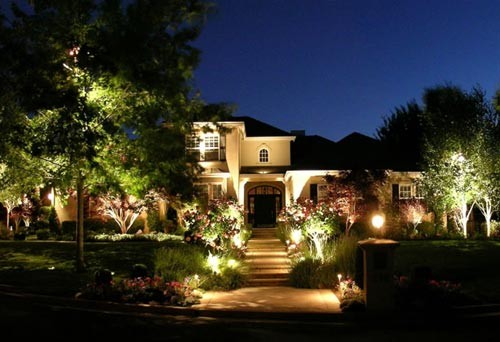
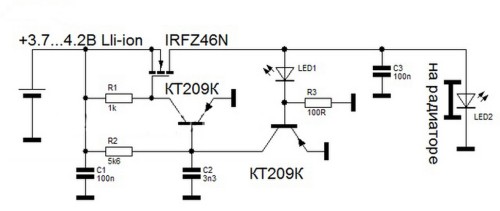
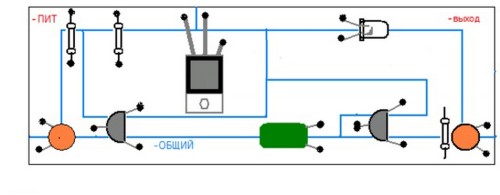
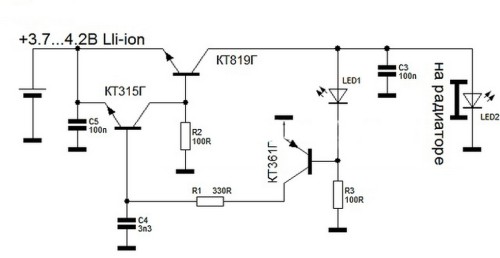
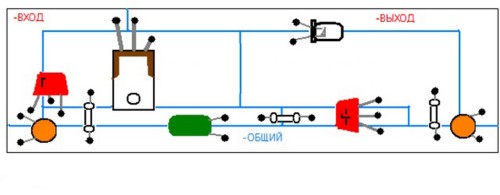
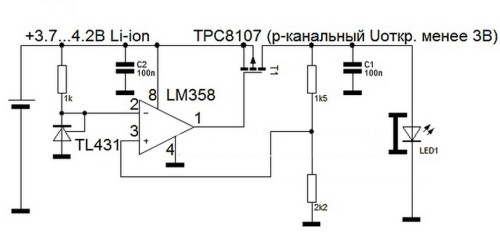












 Start a discussion ...
Start a discussion ...